Toolkit on Environmental Sustainability in the Museum Practice
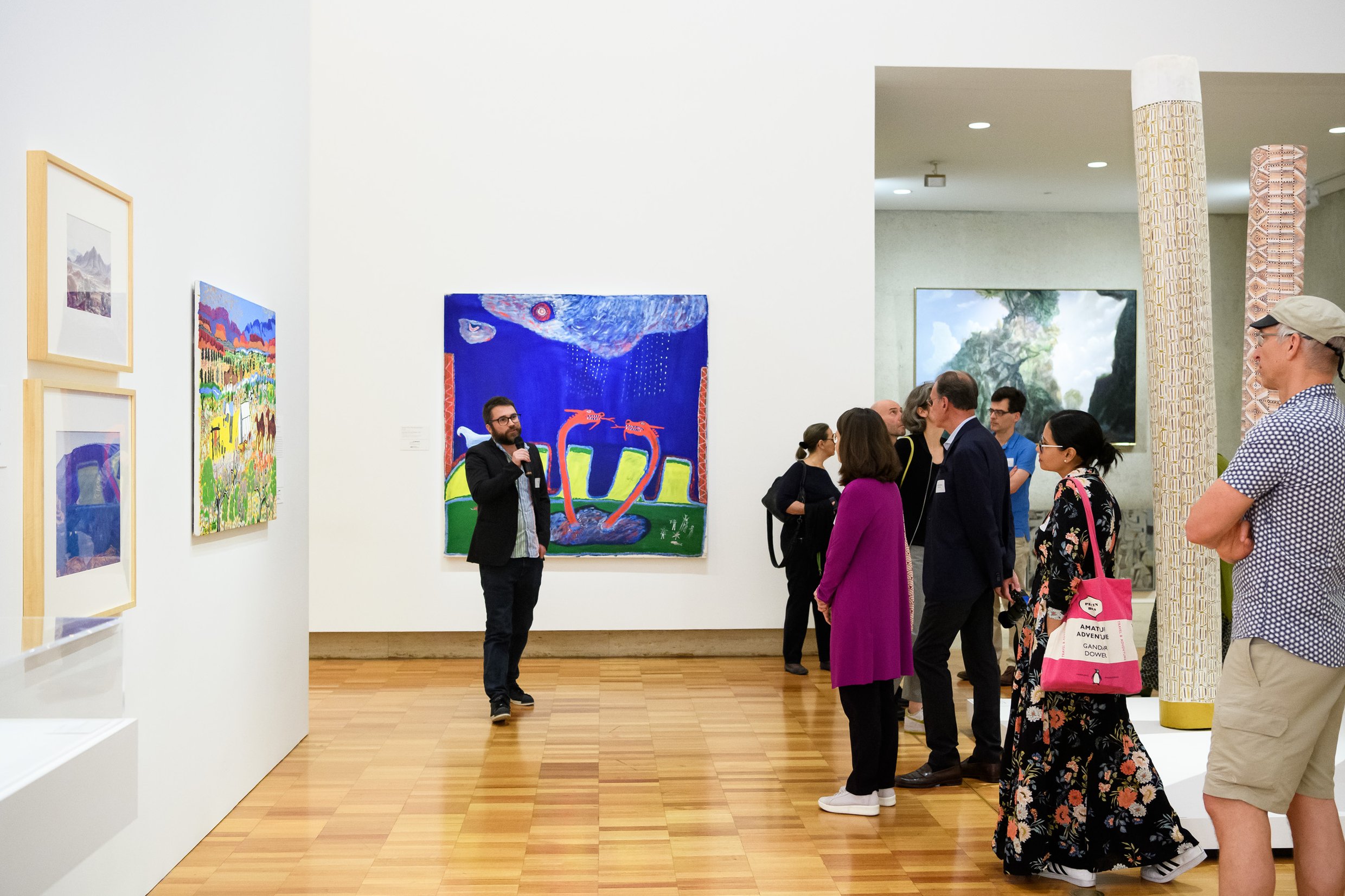
May 2021. Latest update: July 2021.
At CIMAM we recognize climate and ecological emergency and are seriously committed to working towards sustainability understood in the broadest terms set out by the UN’s Sustainable Development Goals, Agenda 2030. As an international organization dedicated to promoting best practices in modern and contemporary art museums, and to raising awareness and responding to the evolving needs of the profession, environmental sustainability is one of the main and most urgent aspects we should take care of.
It is part of our mission to foster change and facilitate to our members the resources, tools, guides, and examples to reduce museums’ carbon footprint in the short, medium, and long term. CIMAM encourages its members to commit to implementing the necessary changes for achieving climate neutrality according to the United Nations’ Sustainable Development Goals (SDGs).
This toolkit produced thanks to the contributions of CIMAM Board members 2020–22, aims to help contemporary art museum professionals start implementing the necessary changes to become carbon neutral. It comprises the following sections:
(1) Examples of Immediate Actions
(2) Sustainability Action Plans
(3) Carbon Footprint Calculators and Certificates
(4) Sustainability Consultants
(5) Inspiring Projects, Platforms, and Resources
(6) Reading List
The 2020–22 Sustainability and Ecology in Museum Practice group consists of seven CIMAM board members: Frances Morris (Chair), Suhanya Raffel, Suzanne Cotter, Mami Kataoka, Malgorzata Ludwisiak, Ann-Sofi Noring, and Rhana Devenport.
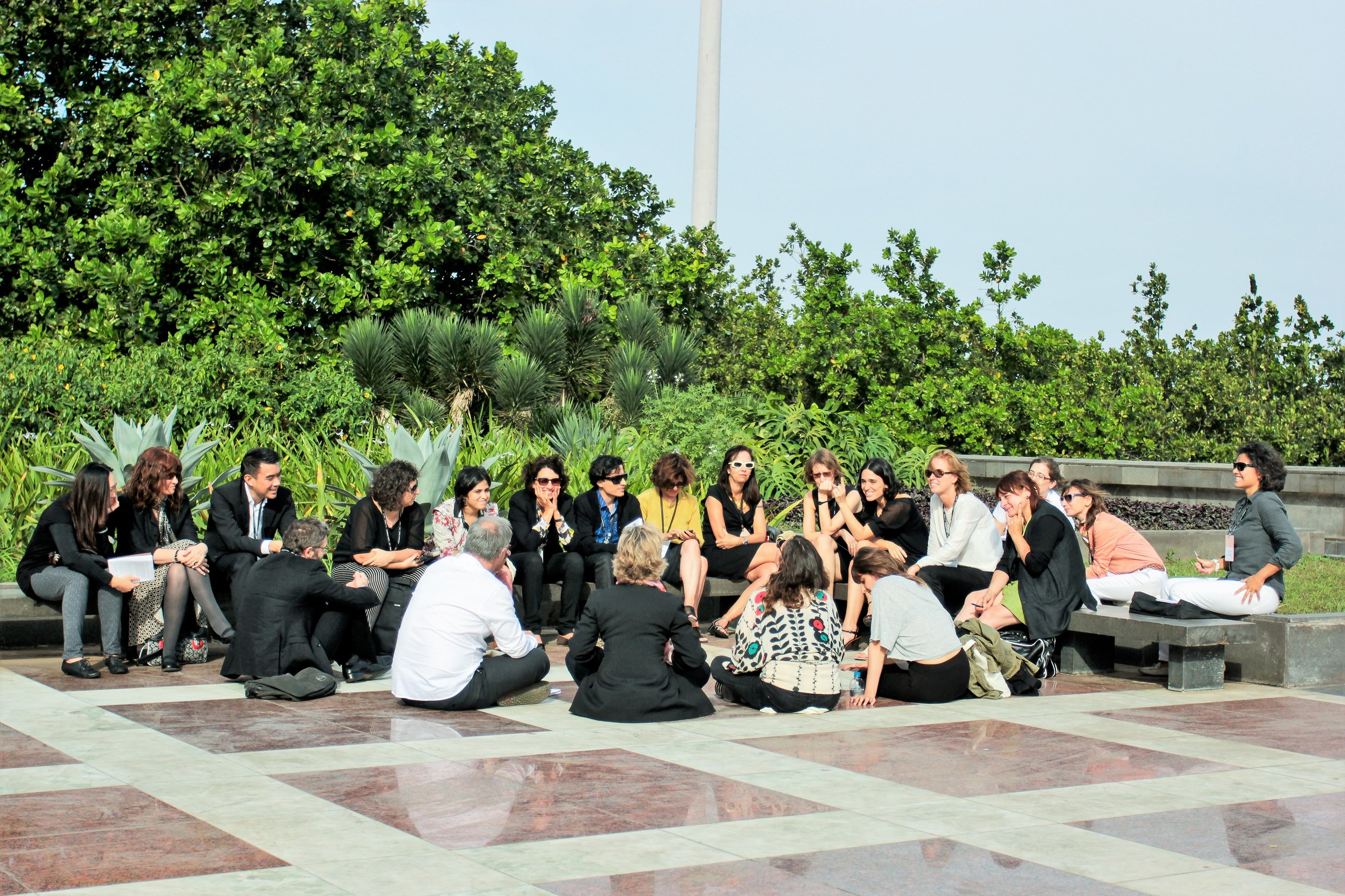
(1) Examples of Immediate Actions
This section collates a series of actions and solutions that are currently being implemented in the museums and curatorial projects of CIMAM Board members 2020–22.
EXHIBITIONS AND PROGRAMS
- Extend the duration of exhibitions to over 3 months and a half or even longer. Sensitive works from a conservation perspective are discussed separately.
- Greater focus on local artists and works from the collection.
- Use virtual couriers. And analyze in each case which is the most suitable transport for the artwork and the environment.
- Plan for international exhibitions to be installed remotely, without the artists and external curators.
- Reusable exhibition furniture, such as display cases and frames, reusing walls from previous exhibitions, developing modular temporary walls, and reusing wooden flooring employed to protect during the installation.
- List the stored items, create guidelines for exhibition designers regarding which materials could be used, non-toxic, recyclable, or reusable, etc.
- Offer workshops and training programs to help foster awareness of the need to protect our environment.
- Produce virtual materials for families, learners, the disabled, and everyone to access online.
MUSEUM STAFF
- Hire staff to work remotely, including research and viewing of artworks for acquisition.
- Involve all museum staff and departments in all stages of the planning and executing of the Sustainability Plan.
- Provide training to your staff, consulting experts, and commissioning professional reports.
- Obtain certificates to rate the environmental sustainability performance of your programs, operations, and building management.
- Apply for grants that support environmental operational changes and the production of environmental-related programs.
OPERATIONS AND BUILDING EFFICIENCY
- Establish a responsible policy for the use of administrative consumables.
- Establish a low-print policy with a move to digital communication, including reports for Councils and Ministries.
- Print only the essentials. If you print, do it double-sided.
- Reduce printed promotional materials such as leaflets, postcards, invitations, etc.
- Rethink publications formats. E-catalogs, for example, can be purchased online.
- Make inventories of the types of paper used and choose the most environmentally respectful.
- If you print, use Km0 printers (incurring no flights) using eco ink and recycled paper.
- Establish an internal waste-sorting guide.
- Convert the lighting system to LED.
- Install photovoltaic panels in your building.
- Composting, also by the restaurant and café.
- Increase Km0 products and vegetarian options in your restaurant and café.
- Zero plastic. Including replacing plastic garbage bags with ecological ones.
- Use tap water instead of bottled – in the museum, restaurant, and café. If tap water is not possible, then build a safe water supply to reduce the number of plastic bottles.
- Use regular cups instead of paper or plastic cups. Zero waste.
- Create bicycle parking to encourage museum staff and visitors to cycle.
- Partner with like-minded museums and venues to share and reuse resources.
- Work in alliance with public and private entities that may help you in realizing your green mission and promote environmental awareness.
- Install a rainwater tank to water the green areas surrounding the museum.
- Review the irrigation circuits for the venue's green areas. Ensure they are controlled and adequate. consumption of water according to the season.
- The most effective way to reduce waste is to not create it in the first place.
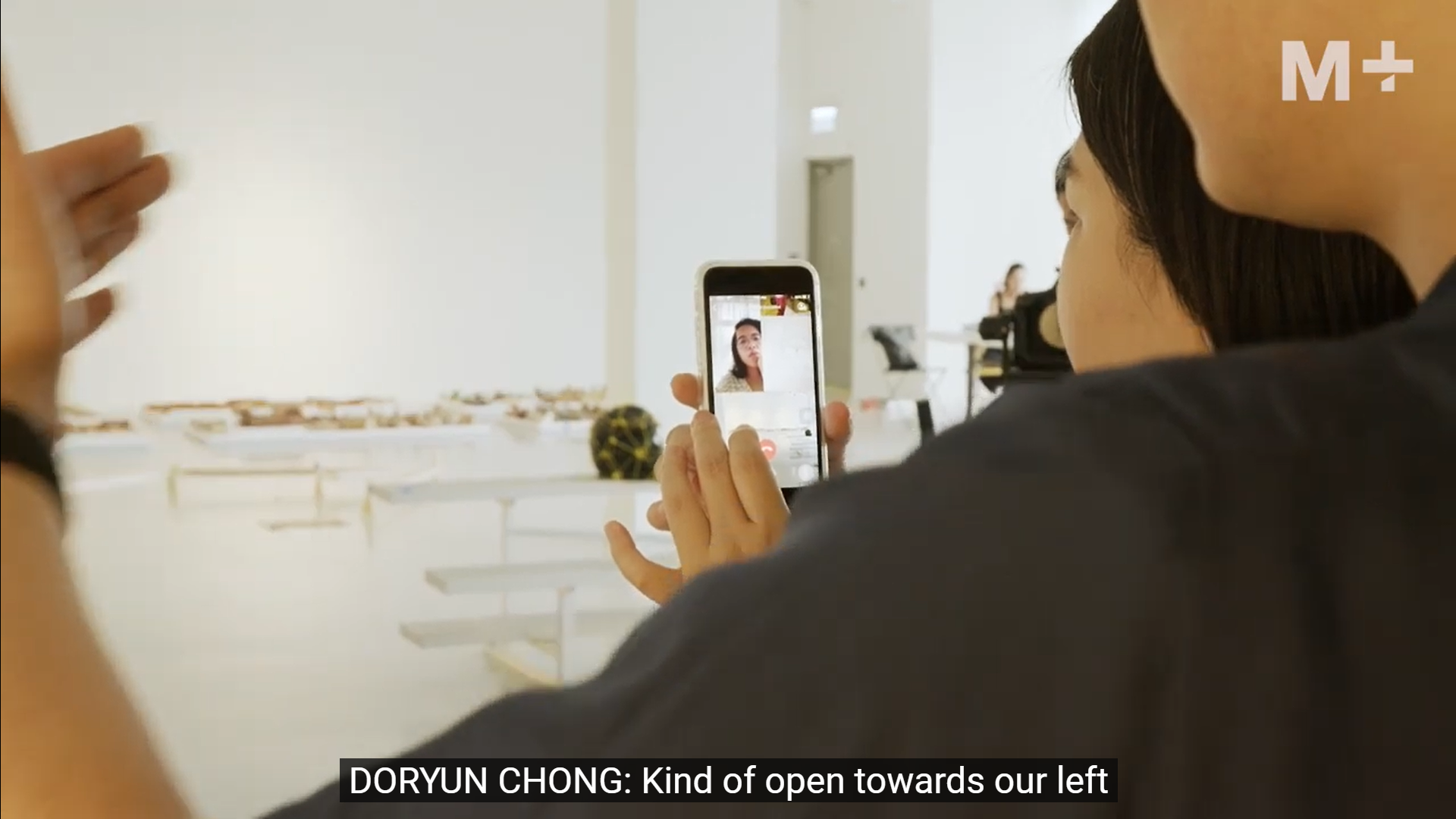
Due to the COVID-19 pandemic, artist Shirley Tse and guest curator Christina Li were unable to travel to Hong Kong for the installation at M+ of Shirley Tse: Stakes and Holders. The exhibition was installed through extensive dialogue across three different time zones – between the artist in Los Angeles, the guest curator in Amsterdam, and the curatorial and installation team in Hong Kong. Watch the full video here.
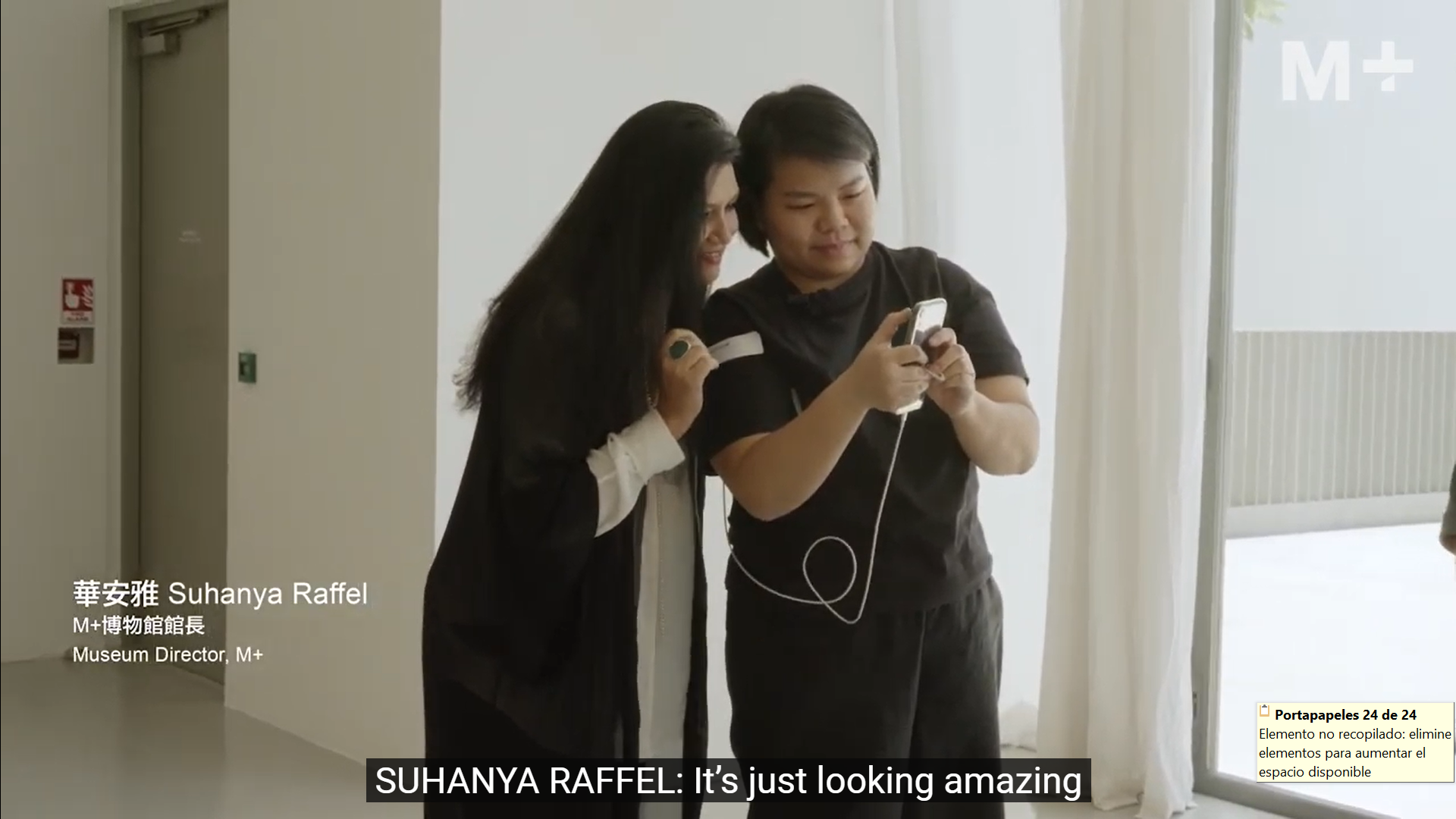
Another example is artist Phyllida Barlow's virtual installation for Another Energy: Power to Continue Challenging exhibition at Mori Art Museum where both the artist and curators (Mami Kataoka and Martin Germann) worked remotely.

The Museo de Arte Moderno de Buenos Aires, Argentina has extended the length of the exhibitions according to their size:
Major Exhibitions (800–1200m2) used to last 7 months, from 2020 onwards they last 1 year.
Medium Exhibitions (400–800m2) last an average of 6–7 months.
Small or Project shows (80m2) of younger artists or research projects usually last 3–6 months.
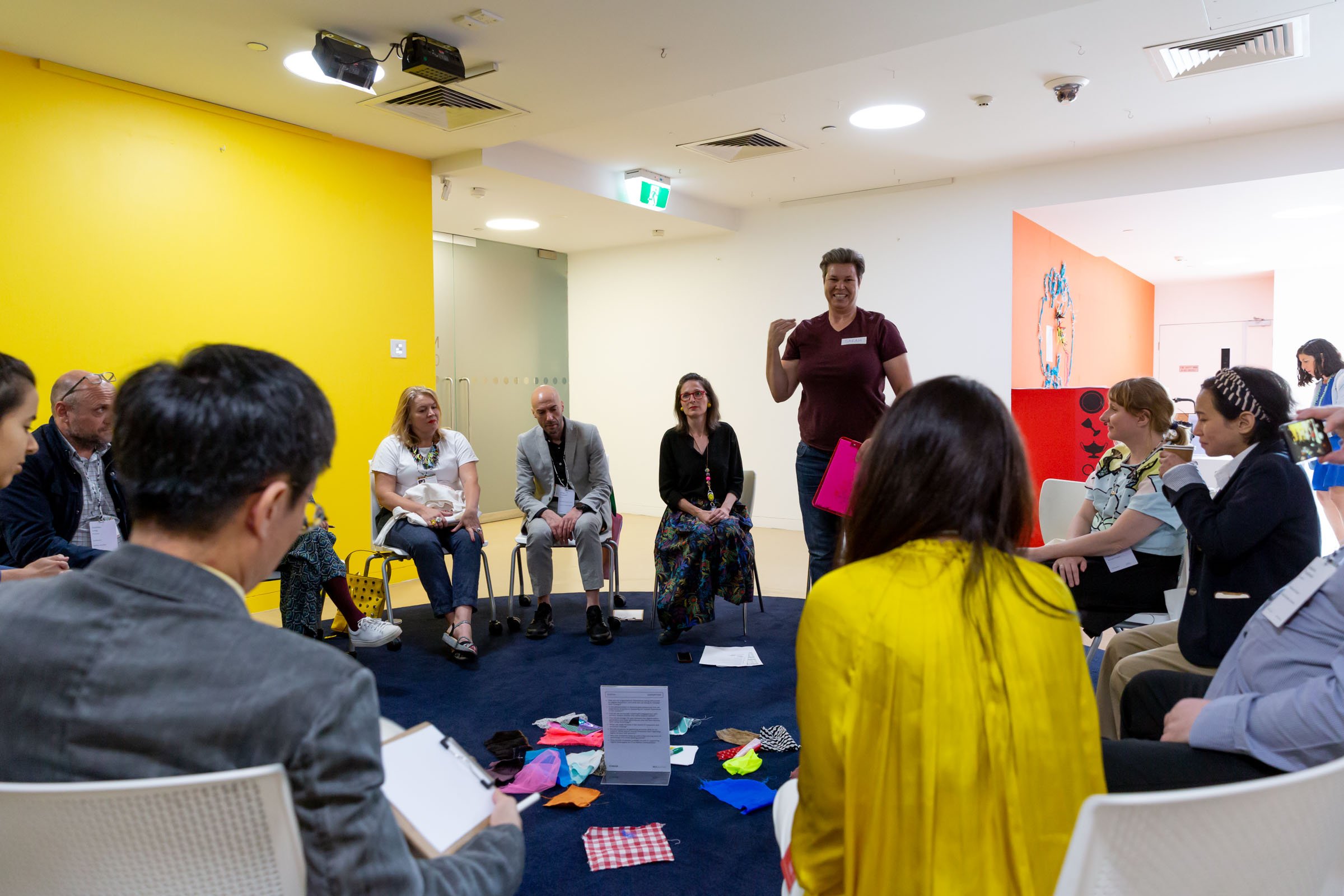
(2) Sustainability Action Plans by Museums
Almost everything can be reinvented, and looking at successful examples will give you the confidence to take the pledge and make the necessary changes in your institution.
TATE.
Tate’s virtual first courier policy both for loans from collection and loans to exhibitions. This document is intended to offer guidance for ways of working to facilitate a virtual process for overseeing the movement of an artwork on loan to Tate or lent from Tate’s Collection. The detail given here provides an overview and offers ways of working that are intended to be readily adaptable rather than offering instruction.
Tate Courier: Principles and Guidelines
Tate: Realising a virtual courier
M+.
Sustainability is a key pillar of M+. Our Impact Framework says: “We are committed to social and cultural wellbeing, and environmental and financial sustainability. We will continue to nurture our social and corporate responsibility while accelerating our response to climate change.” Now is the time for M+ to articulate a cohesive sustainability approach.
The implementation of the Australian Museum’s Sustainability Action Plan has reduced greenhouse gas emissions and together with three strategic carbon offset programs the AM is proudly carbon neutral.
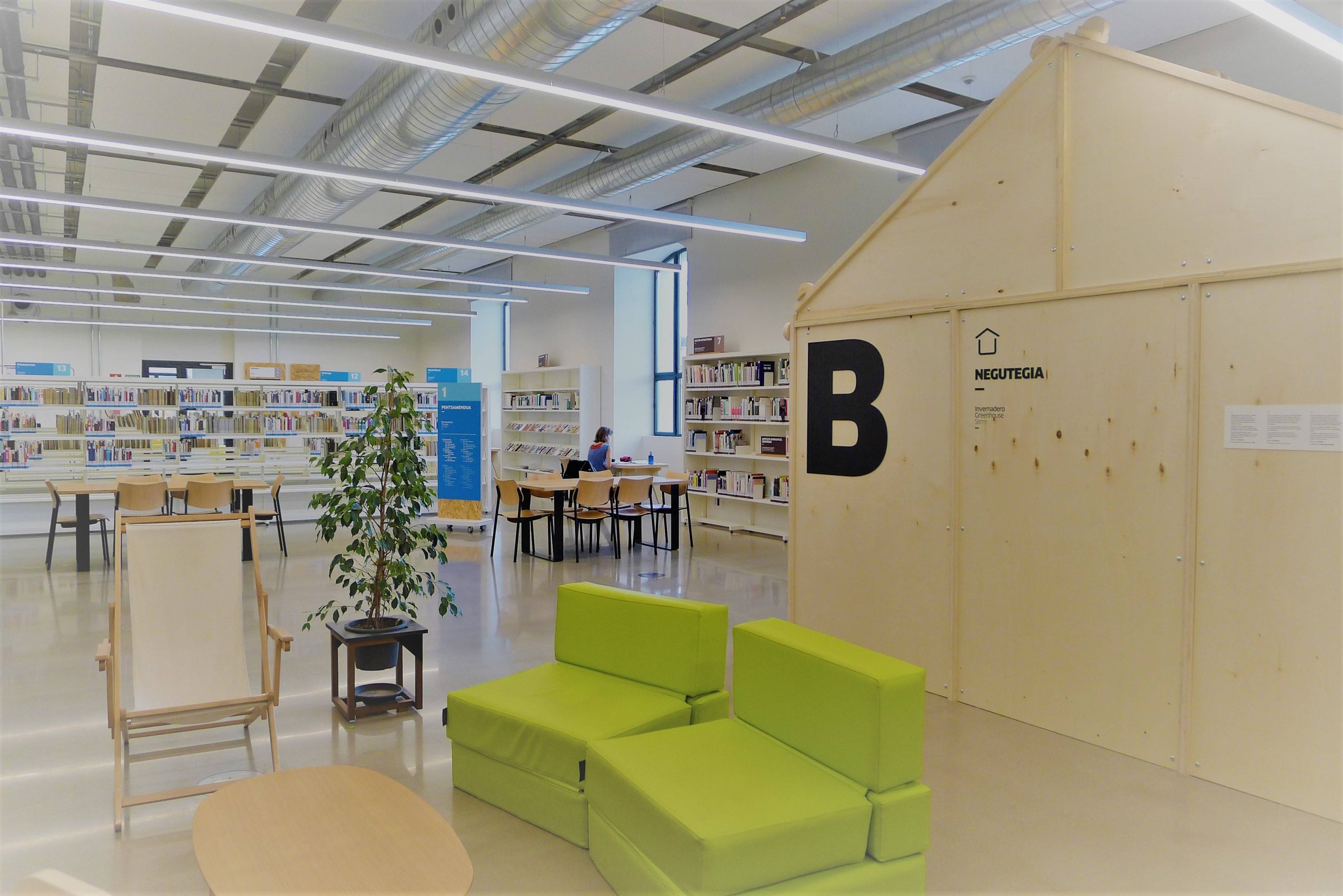
(3) Carbon Footprint Calculators and Certificates
Knowing your current carbon print is the best way to help you set clear goals and a strategy to become carbon neutral.
GCC Gallery Climate Coalition. This free online tool is designed to help estimate the carbon footprint of your business based on metrics common to most art galleries in today’s international art world. It aims to be as easy-to-use as possible and provides a quick breakdown of the main sources of greenhouse gas emissions. Based in the UK and working abroad.
Climate Neutral Certificate. It's the standard earned by companies that offset and reduce all of their greenhouse gas emissions. Based in the US.
Certified B Corporation. B Corp Certification measures a company’s entire social and environmental performance, including public transparency and legal accountability. Based in New York and Amsterdam, and working abroad.
United Nations Climate Neutral Now. Join this initiative to achieve a climate-neutral world by 2050, as enshrined in the Paris Agreement. As an organization you can take part by signing the Climate Neutral Now Pledge, following the three steps (Measure, Reduce, Contribute), and reporting on its actions and achievements annually. International.
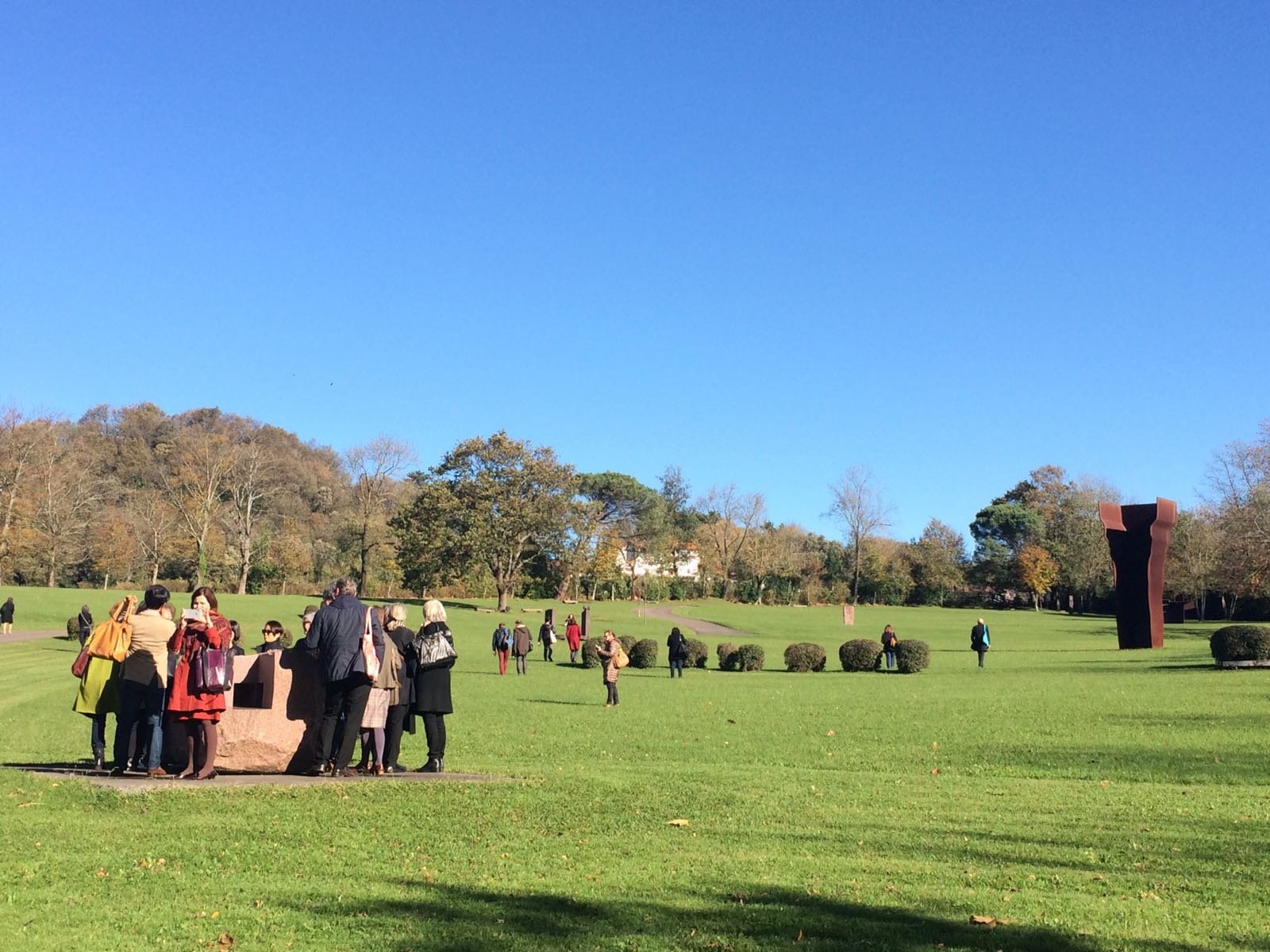
(3) Sustainability Consultants
It is always a good idea to consult a professional. Some of these consultants are focused on cultural organizations, those who are not have been recommended by the members of the CIMAM Board.
The UK and Abroad
Curating Tomorrow. A consultancy for museums, the heritage sector, and anyone interested in creating a better future. By Henry Mcghie. Based in the UK and working abroad.
Julie’s Bicycle. A London-based charity that supports the creative community to act on climate change and environmental sustainability. They provide services to enable embed environmental sustainability in work, allowing to demonstrate action on climate change. Based in the UK.
United States
Sustainable Museums. Strategies and networks for cultural institutions committed to fostering environmental sustainability, responding to climate change, and supporting the UN Sustainable Development Goals. By Sarah Sutton. Based in the US.
Singapore and Australasia
engeco. Offers expert advice on energy and climate change strategy in Australasia. They provide clear, achievable strategies to help companies, NGOs, and governments prepare for the major transition to a low carbon, alternative energy future. Based in Singapore and working in Australasia.
Paia. A team of dedicated sustainability specialists committed to working alongside companies to understand the business risks and opportunities that sustainability issues pose, and how best to apply those within existing company structures and strategies. Based in Singapore and working globally, but with a particular focus on Singapore, Malaysia, and Indonesia.
Ere-S. With over ten years of experience in producing and assuring sustainability reports for many high-profile companies in Southeast Asia, Ere-S is Singapore's leading corporate sustainability consultant.
Finland and abroad
Gaia. After more than 25 years of business, we have one of the world’s largest and most experienced teams in our field. We have helped over 1,000 companies and organizations to make the world a cleaner and safer place. Based in Finland and working abroad.
Spain and Latin America
ECODES. Measures and evaluates the impact generated by the activities and projects of companies, organizations, and public administrations. They offer different activities and services to be able to act now, to implement the common agenda of humanity: the Sustainable Development Goals and the Paris Agreement. Based in Spain, and working in Latin America.
CeroCO2. Since 2005 calculating, reducing and offsetting carbon footprints to tackle the climate crisis. CeroCO2 proposes concrete actions for climate protection, facilitating and promoting the involvement of all social actors. Based in Spain.
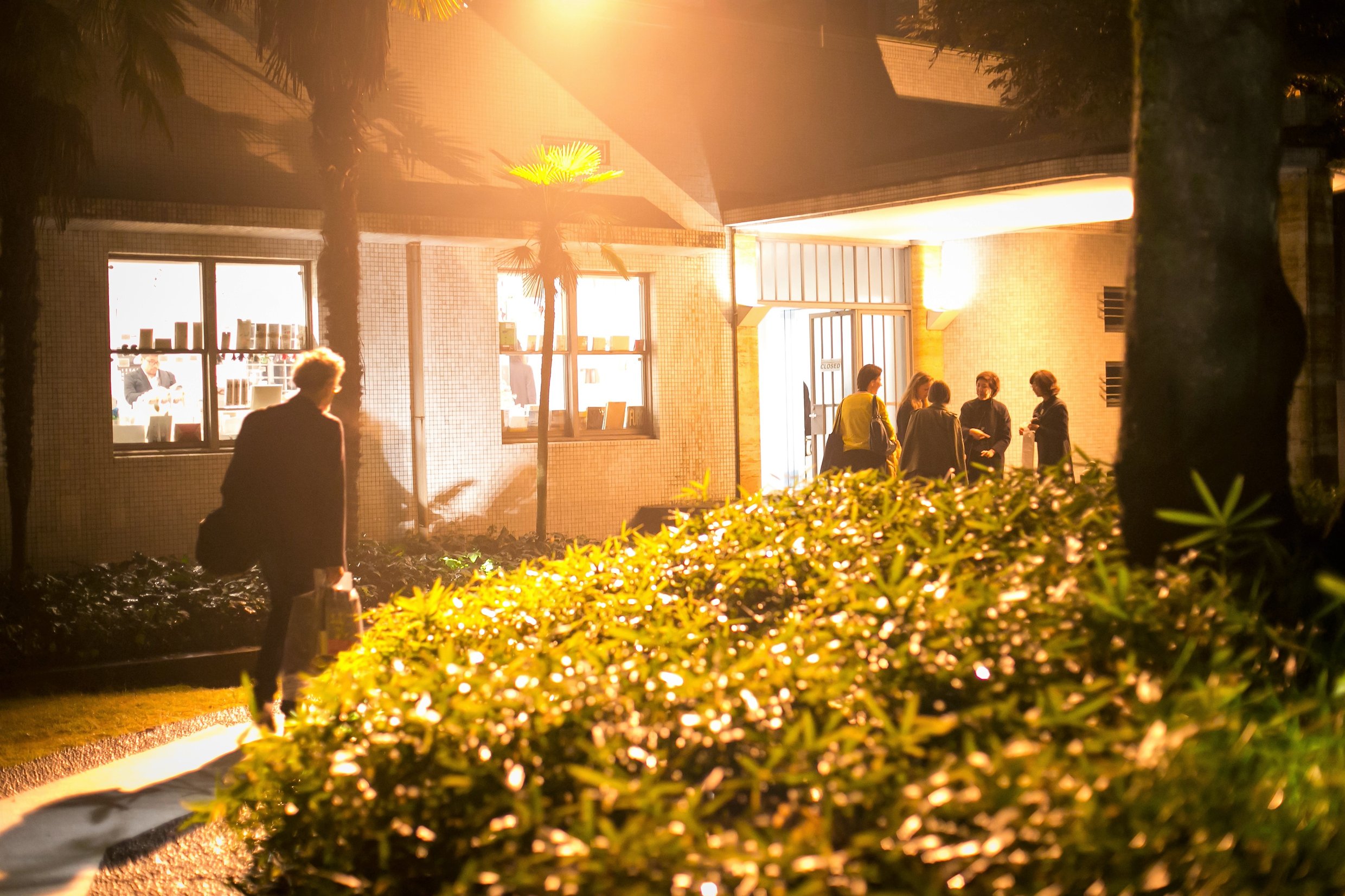
(5) Inspiring Projects, Platforms, and Resources
It is a relief to find so many organizations working to foster the necessary changes to protect the environment. We have included here those platforms focused on museums and curatorial projects that contribute to raising awareness in society.
Ki Culture. A non-profit organization that provides sustainable solutions for cultural heritage. Ki Culture provides solutions to promote sustainable practices for professionals and leverage cultural heritage to effectively make an industry-wide impact.
Museums For Future. Museums For Future is a global movement of museum workers, cultural heritage professionals, and many others to support the #FridaysForFuture movement with positive actions.
Green Art Lab Alliance. An alliance of art organizations and artists. It contains a manifesto, funding guides to develop cultural sustainable projects, a guide for positive printing, a directory of creative responses to sustainability, and much more.
Art/Switch. Aims to develop climate-conscious practices for a carbon zero, future-proof arts sector, helping the arts to use its inherent creativity to rethink its structure and play a leading role in the sustainable shift. Art/Switch functions as an incubator for these ideas, a hub that brings together different players to hasten this movement of change. Based in Amsterdam and New York.
We Are Museums. Museums Facing Extinction. Fosters systemic changes towards a climate-resilient future, good for people and the Planet through community-based actions. A program designed by EIT Climate-KIC and We Are Museums.
Coalition of Museums for Climate Justice. Building museums' capacity to promote awareness, mitigation, and resilience in the face of climate change. It mobilizes and supports Canadian museum workers and their organizations in building public awareness.
Culture Declares. A growing international movement of individuals and organizations in the cultural sector declaring a climate and ecological emergency by telling the truth, taking action, and seeking justice.
Sustainability in Conservation. SiC Sustainability in Conservation (SiC) is a branch of Ki Culture dedicated to promoting environmental awareness and sustainable practices in the conservation of cultural heritage. By Caitlin Southwick.
Reduce Art Flights. A campaign that upholds that the art world – artists, curators, critics, gallerists, collectors, museum directors, etc. – could or should diminish its use of airplanes. It was initiated by the artist Gustav Metzger in 2007 and the website (first established in 2008) is maintained by the curatorial office Latitudes.
Acclimatize. An online project targeting climate change. A source of inspiration full of ideas and reflections on climate change with texts by Olafur Eliasson, Maria Friberg, Isaac Julien, Bigert & Bergström, and by professionals with different perspectives on climate change, sustainability, and creativity. Initiated and organized by Moderna Museet.
Museums for Climate Action. A site that gathers a range of thinking about how museums might address the challenges of a warming world. Divided into three sections –Rethink, Reimagine and Mobilise– the site includes research material from the project team, a suite of concepts imagining possible museum futures in the climate change era, and key resources to inspire radical climate action in the sector and beyond.

(6) Reading List
The papers and books listed below have been recommended for being powerful sources of inspiration.
Degrowth and Progress. Texts by Sara Buraya Boned, Cristina Cámara, Marta Echaves, Silvia Federici, Ida Hiršenfelder, Vladan Joler, Vincent Liegey, Monica Narula, Nataša Petrešin-Bachelez, Corina Oprea, Paula Pin Lage, Ajda Pistotnik. Presenting works by: Rosa Barba, nora chipaumire and Ari Marcopoulos, Vladan Joler, Staš Kleindienst, Elizabeth LaPensée, Paula Pin Lage, Raqs Media Collective, Maja Smrekar, Andrés Tena (2021).
Plasticity of the Planet: On Environmental Challenge for Art and Its Institutions. Texts by Defne Ayas, Viviana Checchia, Grzegorz Czemiel, Daniel Falb, Cathy Fitzgerald, Mira Gakjina, Alexander Hope, Anne Szefer Karlsen, Jarosław Lubiak, Małgorzata Ludwisiak, Ewa Majewska, Catharine Malabou, Nataša Petrešin-Bachelez, Małgorzata Sugiera, and Magdalena Ziółkowska (2019).
Resource Hungry. Our Cultured Landscape and its Ecological Impact. Texts by Jennifer Allora & Guillermo Calzadilla, Stuart Bannocks, Andrea Bowers, Elvira Dyangani Ose, Professor Roberto Feo & Rosario Hurtado, Dominique Gonzalez- Foerster, Dorothea von Hantelmann, Joan Jonas, Stefan Kaegi, Jessica Morgan, Philippe Rahm, Lucy Raven Anneliek Sijbrandij et al. Edited by Jessica Morgan and Dorothea von Hantelmann (2020).
Life Cycle Assessments of Loans and Exhibitions: Three Case Studies at the Museum Fine Arts, Boston. Texts by Sarah Nunberg, Matthew J. Eckelman, and Pamela Hatchfield (2016). Journal of the American Institute for Conservation.
The carbon footprint of museum loans: a pilot study at Amgueddfa Cymru – National Museum Wales. Texts by Simon Lambert & Jane Henderson (2011). Museum Management and Curatorship.
Museums on the Climate Journey. Essentials Guidebook 6 Tips to a Sustainable Management of a Museum. Text by We Are Museums.
Waste&Materials. Collections Care: Packing, Storage & Transport. A Step-By-Step Guide for Sustainable Action. Volume I. Texts by Ki Culture. This guide is intended to provide sustainability information to make the best possible decisions for your needs working in the cultural field.
Read prose and lyrics as well, not only hard facts to understand how serious the environmental crisis is:
Walden by Henry David Thoreau (1854).
Silent Spring by Rachel Carson (1962).
Aniara by Harry Martinson (1956).
The Half-Finished Heaven by Tomas Tranströmer (Selected Poems 2001).
CIMAM’s Sustainability and Ecology in Museum Practice working group 2020–22
The 2020–22 Sustainability and Ecology in Museum Practice group consists of seven CIMAM Board members: Frances Morris (Chair), Suhanya Raffel, Suzanne Cotter, Mami Kataoka, Malgorzata Ludwisiak, Ann-Sofi Noring, and Rhana Devenport.
Download the CIMAM Toolkit on Environmental Sustainability in the Museum Practice in PDF here.